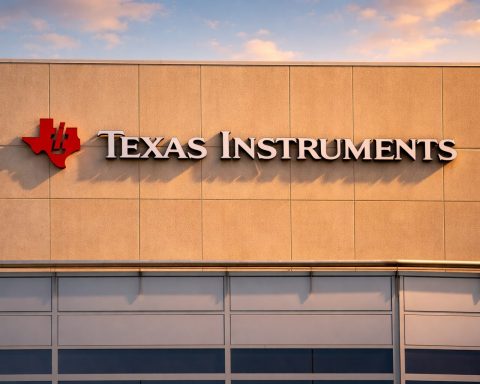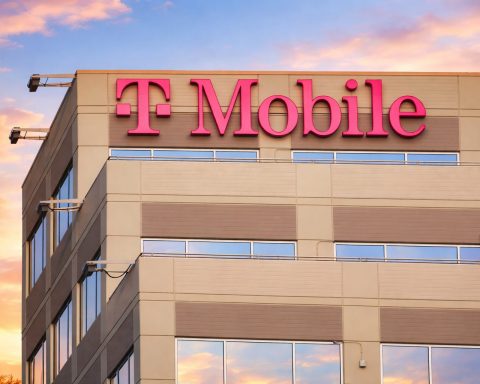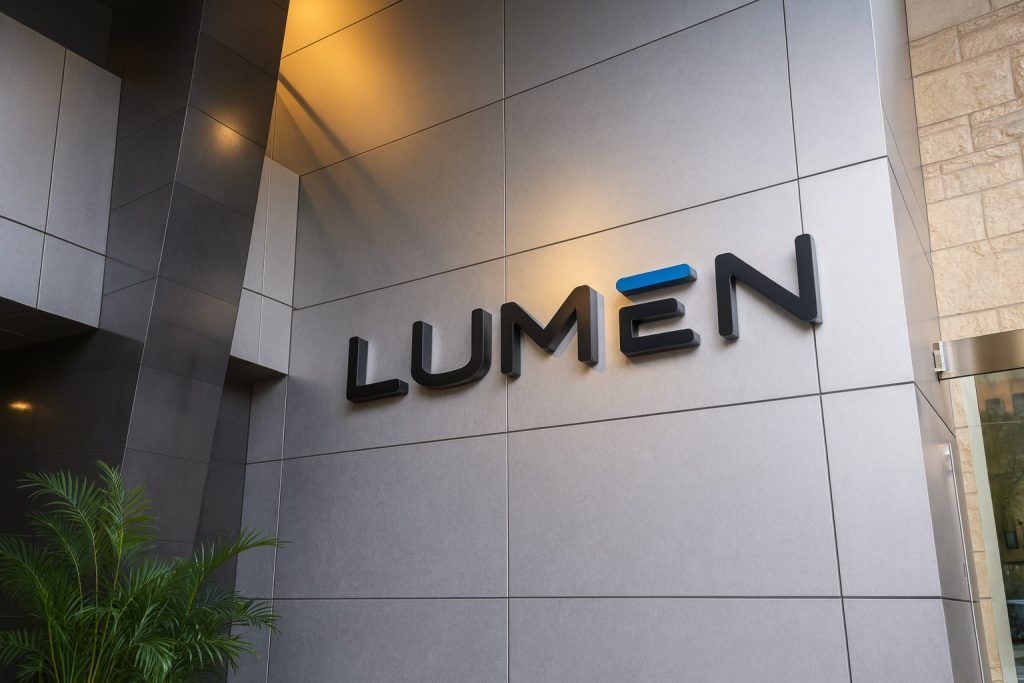- Stock Surges on News: Scienture Holdings (NASDAQ: SCNX) spiked as much as 45% in pre-market trading on Oct. 23, 2025 after announcing the first commercial sales of its new drug, extending a 10.9% rally from the prior day [1]. Despite the rebound, SCNX remains down over 90% year-to-date [2], reflecting its volatile micro-cap status (recently trading around $0.70 per share). Trading volume exploded to 77 million shares on the news (vs ~4 million average) [3], signaling intense investor interest.
- FDA-Approved Drug Launch: The company’s Arbli™ oral suspension – the first FDA-approved ready-to-use liquid form of losartan (a common blood-pressure drug) – officially hit the U.S. market in October [4] [5]. Scienture touts Arbli as a unique solution for patients (like children or seniors) who can’t swallow pills, entering a $256 million annual hypertension market previously served only by tablet formulations [6] [7]. The Oct. 16 launch of Arbli through major wholesalers and the Oct. 23 start of sales mark the company’s transition from R&D to commercialization [8] [9].
- Big Partnerships & Market Reach: To drive adoption, Scienture has struck major distribution and formulary coverage deals. In September the company secured a PBM-led GPO rebate agreement covering 100+ million patients to support Arbli’s inclusion on insurance formularies [10]. It also signed multiple group purchasing organization contracts expanding Arbli’s access to 2,500+ healthcare institutions (about 20% of U.S. hospitals/clinics) [11]. Executives say these agreements give Arbli a broad footprint across hospitals, long-term care facilities, and pharmacies from day one. “The start of commercial sales for Arbli™ represents a major achievement for Scienture…we see significant potential for sustained adoption and value creation,” stated Narasimhan Mani, Scienture’s President and co-CEO [12].
- Financial Moves Strengthen Balance Sheet: In early October, Scienture addressed its debt overhang by converting all outstanding debentures to equity. The company entered an agreement with Arena Investors to revise the debenture conversion price to $2.4861/share, issuing stock to fully repay those notes [13]. This move eliminated interest-bearing debt and liens, which management calls “a pivotal step…strengthening our balance sheet [and] eliminating interest-bearing obligations” ahead of the product launch [14]. While the conversion likely added new shares (diluting existing shareholders), it relieves Scienture of debt payments and positions the firm to focus resources on Arbli’s rollout.
- Analyst Caution vs. AI Optimism:Wall Street coverage is sparse for SCNX, but the few analyses available urge caution. TipRanks’ AI-driven analyst “Spark” rates SCNX Underperform with a $2 12-month price target, citing “weak financial performance and concerning valuation metrics” (no profitable revenue and heavy cash burn to date) [15]. In fact, the sole human analyst rating on record is a Sell, reflecting the company’s high risk profile [16]. However, some forecasting models see upside: for example, Intellectia.ai projects SCNX could average around $2.46 by mid-2026 if momentum continues [17]. These speculative models assume successful Arbli adoption, but experts stress real earnings data is needed to justify any sustained rally [18].
- Investor Buzz and Momentum Trading: Scienture has become a hot topic among penny-stock traders. Short interest is modest (~2% of float), so the buying frenzy appears driven by bullish sentiment rather than a short squeeze [19]. Technical analysts noted SCNX’s 10.9% spike on Oct. 22 (with 3+ million shares traded) happened despite no new fundamental news, suggesting a breakout from consolidation or short-covering rally in anticipation of impending news [20] [21]. “The market is treating Arbli as a ‘revenue rocket,’” observed trader Jeff Bishop, highlighting the huge unmet need Arbli addresses (tens of millions of hypertension patients who struggle with pills) [22]. Yet seasoned observers warn that micro-cap biotech stocks “trade more on momentum than fundamentals” [23] and can fall as fast as they rise. One commentator noted the wild swings are a “classic biotech news reaction” fueled by optimism, and cautioned that “prudent investors will watch the actual sales and profits in the quarters ahead” [24].
SCNX Stock Soars on Arbli Launch News
Scienture’s stock has been on a rollercoaster in late October amid excitement over Arbli’s rollout. The initial catalyst came on October 16, 2025, when the company announced Arbli™ was available through major wholesalers – making it the first FDA-approved liquid losartan on the market [25]. That morning, SCNX shares surged over 30% from the prior day’s $0.72 close, even hitting an intraday high around $1.12 before profit-taking set in [26]. By mid-day Oct. 16, Reuters reported the stock had pulled back near $0.71 [27], indicating traders sold into the early pop. Still, the news established a new baseline of investor optimism.
After a brief consolidation, momentum picked up again on Oct. 22. Despite no fresh news that day, SCNX spiked +10.9% intraday on unusually heavy volume (3.07 million shares) [28]. Market analysts pointed out that no obvious technical sell signals (like RSI or “death cross” patterns) were present, so the sudden move looked like a technical breakout or short-covering rally rather than a fundamentally driven jump [29] [30]. In other words, traders appeared to be positioning ahead of an anticipated announcement – a hint of the “buy the rumor” dynamic often seen in speculative stocks.
Their hunch was validated the next morning (Oct. 23), when Scienture announced the first commercial sales and shipments of Arbli to customers. In pre-market trading that day, SCNX skyrocketed roughly 45% on the announcement [31]. The stock opened sharply higher as mainstream outlets picked up the story of a tiny pharma launching a first-of-its-kind drug. By mid-session, over 77 million SCNX shares had traded – dwarfing its typical 4 million daily volume [32] – reflecting a flood of retail traders and possibly algorithmic momentum buyers piling in.
Even with these bursts of enthusiasm, SCNX remains a penny stock for now. At around $0.70–$0.80 per share in recent trading, the price is still near the bottom of its 52-week range ($0.68 – $9.22) [33]. In fact, shares have cratered over 90% in 2025 amid past dilution and operating losses [34]. This context tempers the current rally: while Arbli’s launch has clearly reinvigorated interest, the company has a long way to go to recover its former value. The share count has expanded through financings (including a 3.225 million share offering at $1.20 in Aug 2025 [35]), which makes outsized moves easier but also means previous highs are hard to regain. Investors should be mindful that volatility cuts both ways – as seen on Oct. 16 when an early 50% leap evaporated by lunch. Thus, the key question is whether Scienture can convert Arbli’s news into sustained momentum or if this spike will fade once the hype settles.
Arbli Debut: First Liquid Losartan Targets an Untapped Niche
The excitement around Scienture centers on Arbli™, its flagship product and first revenue-generating asset. Arbli (losartan potassium oral suspension, 10mg/mL) is significant because it’s the only FDA-approved ready-to-use liquid formulation of losartan [36], a widely used hypertension medication. Losartan (original brand Cozaar) is a top-prescribed blood pressure drug, with 69–71 million U.S. prescriptions annually and roughly a $256 million annual market in the U.S. [37]. Until now, however, all losartan products have been tablets, which poses a challenge for patients who have difficulty swallowing pills (such as young children, certain elderly patients, or those with swallowing disorders). Doctors and pharmacists have coped by compounding (grinding tablets into liquid suspensions at pharmacies), but that process can be inconvenient and inconsistent in dosage.
Arbli directly addresses this unmet need. It comes as a peppermint-flavored liquid in stable bottled form, requiring no compounding or refrigeration [38] [39]. The formulation has a 24-month shelf life at room temperature and is ready to dispense, ensuring accurate dosing and easier administration for patients who can’t take pills [40] [41]. In FDA approvals earlier this year, Arbli was cleared for treating hypertension in patients over 6 years old, for reducing stroke risk in hypertensive patients with left-ventricular hypertrophy, and for treating diabetic kidney disease in hypertensive diabetics [42] – essentially mirroring oral losartan’s indications, but in a new delivery form. By offering a liquid alternative with FDA oversight, Scienture aims to capture the segment of the hypertensive population that has been underserved by pill-only options.
From a competitive standpoint, Scienture is carving out a unique niche. Generic pharma giants like Merck, Teva, and others produce losartan pills cheaply, but none offer a ready-made liquid solution for the U.S. market [43]. Arbli’s value proposition is that convenience and compliance (patients actually taking their medicine as prescribed) could improve with a liquid option, even if it comes at a premium price. The company has indicated that insurers and pharmacy benefit managers (PBMs) may cover Arbli if it demonstrates improved patient outcomes or meets a clear need – and the novelty of an FDA-backed liquid formulation gives it a strong case [44]. Importantly, Arbli holds two U.S. patents protecting its formulation [45], which could deter would-be competitors from launching copycats in the near term.
Scienture wasted no time in pushing Arbli to market once approval was in hand (FDA approval came in March 2025, per filings). On October 16, the company announced it had shipped launch stock of Arbli to major pharmaceutical wholesalers nationwide [46]. This effectively meant pharmacies and hospitals could start ordering the product. Just a week later, on October 23, Scienture confirmed the first customer orders had been received and fulfilled, officially kicking off commercial sales [47] [48]. Alongside that milestone, the company launched a multi-channel promotional campaign targeting healthcare professionals, aiming to drive awareness and adoption of Arbli.
To support uptake, Scienture’s partnership strategy is critical. The firm reported finalizing PBM-led group purchasing organization agreements that secure Arbli’s placement on formularies (preferred drug lists) for insurance plans covering over 100 million patients [49]. Additionally, multiple GPO contracts were executed to supply Arbli to 2,500+ healthcare facilities across the country – roughly 20% of U.S. institutional providers [50]. These deals span hospitals, clinics, nursing homes, and long-term care pharmacies, giving Arbli an immediate reach into settings where liquid formulations are especially needed (e.g. pediatrics, geriatrics, and institutional care). Company leadership highlighted that by making Arbli widely accessible through wholesalers and GPO networks, they are eliminating distribution hurdles that often plague small pharma launches [51]. In a statement, Executive Chairman Shankar Hariharan said Arbli “embodies our mission to deliver patient-focused solutions that improve access and convenience”, noting the “early response from healthcare institutions” has been encouraging [52].
The true test for Arbli will be market adoption in the coming months. Scienture is essentially creating a new sub-market (liquid losartan) and will have to educate physicians and pharmacists about its benefits. The company is emphasizing that nearly half of U.S. adults have hypertension, and a subset of those have swallowing difficulties – a sizable potential patient pool [53]. If Scienture’s outreach convinces a fraction of prescribers to switch appropriate patients to Arbli, even a small share of the $256M losartan market could translate into meaningful revenue for a company of Scienture’s size. On the flip side, insurers could resist paying more for a liquid version of a cheap generic pill. The company’s rebate agreements with PBMs suggest they might offer Arbli at competitive net pricing to drive uptake [54]. As Arbli rolls out, investors will be watching for early indicators like re-order rates from pharmacies, feedback from physicians, and any reported issues or adverse effects (none are expected beyond losartan’s known side effects, but as a new formulation it will be monitored).
In summary, Arbli’s launch represents a pivotal moment for Scienture. It moves the company from being a development-stage story to an active commercial enterprise with a product on shelves. This kind of “first product launch” story often attracts speculative interest, as evidenced by the stock’s jump. Now the challenge is execution: Will Arbli gain traction and generate real sales? The answer will likely determine whether SCNX’s recent rally can be sustained or if it fizzles out after the initial fanfare.
Financial Updates: Debenture Conversion and Funding Status
Bringing a new drug to market is costly, and Scienture’s financial condition has been a point of concern. The company (formerly known as TRxADE Health, before pivoting fully into pharmaceuticals in 2024) has incurred significant losses and almost no revenue so far in 2025 [55]. As of mid-year, it was essentially pre-revenue – Arbli and a second product had not yet generated sales – while continuing to spend on R&D, regulatory, and launch preparations. This led to a cash crunch earlier in the year; at one point in mid-2025 the company’s balance sheet showed only ~$15,000 in cash and a “substantial doubt” about continuing as a going concern, according to its SEC filings [56] [57]. Scienture managed to raise new equity financing over the summer (including ~$3.9 million in August at $1.20/share and another ~$1.3 million via a bridge loan in July) [58], which kept the lights on for the Arbli launch.
A major October development has now improved Scienture’s financial footing. On October 3, the company announced an agreement with its lenders (Arena Finance and affiliates) to fully repay and convert all outstanding secured debentures into common stock [59]. These debentures represented several million dollars of debt that had been weighing on Scienture’s balance sheet. Under the deal, the debtholders agreed to a revised conversion price of $2.4861 per share [60], and in exchange Scienture issued them a chunk of common shares to wipe out the remaining loan balances. All liens and security interests held by the lenders were released, and the debenture agreements were terminated [61].
For a stock that was trading under $1 at the time, converting debt at $2.4861/share may seem odd – it implies the lenders accepted equity valued well above the market price. However, this might reflect prior terms or simply a negotiated premium to compensate for the risk. The key outcome is that Scienture eliminated its debt and interest payments in one stroke, significantly “strengthening the balance sheet” in management’s view [62]. “The conversion of the debentures marks a pivotal step in advancing our long-term strategic objectives, further strengthening our balance sheet, eliminating interest-bearing obligations, and optimizing the Company’s capital structure,” commented President Narasimhan Mani [63]. In practical terms, this leaves Scienture with lower monthly cash outflows (no interest to pay) and frees up its assets from collateral, which could make future fundraising easier.
Of course, the flip side is dilution: issuing shares to pay off debt increases the share count, spreading ownership thinner for existing shareholders. The exact number of new shares wasn’t disclosed in the press release, but one can estimate that a few million shares might have been issued given the debt size and $2.4861 price. Still, investors largely cheered the move, as it removes the specter of default or toxic debt overhang at a crucial time. With Arbli launching, Scienture will need all the financial flexibility it can get to invest in marketing and inventory – and now every dollar of Arbli revenue can go toward growth rather than creditors.
Another financial note: Nasdaq listing compliance. Earlier in 2025, SCNX stock fell below the minimum bid price of $1.00 required by Nasdaq, prompting a warning letter from the exchange [64] [65]. The company managed to regain compliance by July 2025 after its stock traded back above $1 for 10 consecutive days [66]. However, with the subsequent decline, shares dipped under $1 again in the fall, raising the risk of another deficiency notice. (In fact, a Form 8-K filing on Oct. 17 indicated a new non-compliance notification for the bid price rule, though the latest rally could help alleviate this if the stock sustains gains.) This is important because maintaining a Nasdaq listing is crucial for liquidity and investor confidence – delisting to the OTC markets would severely hamper Scienture’s access to capital. The company’s ability to pop back above $1 on news (even if temporarily) shows there’s hope to cure this issue, but it likely needs a more lasting price improvement or a reverse stock split down the line. Investors should keep an eye on this listing requirement subplot, as it adds pressure on management to deliver tangible results that support the share price.
In summary, Scienture’s recent actions (debt conversion, equity raises) indicate it is in a race against time to turn its scientific progress into commercial and financial success. The balance sheet cleanup in October is a bullish signal that the company is proactively shoring up finances to support Arbli’s launch [67]. Nonetheless, until meaningful revenue starts flowing, cash will remain tight. Further dilution (through new share issuance) remains a possibility if Arbli sales ramp slower than expected or if additional funds are needed for expansion. This dual reality – improved financial runway yet ongoing funding needs – frames the backdrop as we consider expert opinions on SCNX’s prospects.
Investor Sentiment & Market Reaction: Hype vs. Reality
The launch of Arbli has undoubtedly put Scienture on the radar of many retail investors and traders looking for the next big winner. SCNX has been actively discussed on social platforms like Stocktwits and Reddit’s biotech forums (given its sudden price action), and the tone is a mix of excitement and caution.
On one hand, bullish sentiment is fueled by the idea that “tiny pharma lands FDA-approved product” – a classic recipe for a multibagger stock if all goes well. Many traders are drawn to the low price (sub-$1) and relatively low market cap (~$15–16 million before the recent spike) [68], seeing considerable upside if Arbli sales take off. The story of a small company addressing a clear medical need has a compelling narrative: as one trader, Jeff Bishop of RagingBull, described it, the market is viewing Arbli as a “revenue rocket” for Scienture [69]. Bishop pointed out that with half of U.S. adults battling high blood pressure, a product that helps those who can’t take pills could tap into significant pent-up demand [70]. Some optimists are even comparing Scienture to bygone small-cap biotech success stories, speculating that if Arbli gains even a modest foothold, SCNX stock could climb multiples higher from current levels.
The trading data during the launch week underscores this speculative fervor. Volume and volatility both spiked dramatically – hallmarks of momentum trading at play. Importantly, short interest is quite low (~2% of the float) [71], which suggests the rapid price swings were not primarily a short squeeze (unlike some meme stocks), but rather momentum players chasing the news. Market commentators observed that SCNX’s surge was largely momentum-driven, noting that micro-cap biotech stocks often “trade more on momentum than fundamentals” around catalytic events [72]. In practical terms, that means many buyers were likely trading the hype of the FDA launch itself, with a plan to flip the stock quickly, rather than investing on a long-term fundamental thesis. Indeed, analysts have described the pattern here as a “classic biotech news reaction – huge swings on catalyst news followed by profit-taking” [73]. We saw this pattern on Oct. 16 (initial euphoria then a fade), and it could well repeat.
On the other hand, voices of caution are prevalent, even among those intrigued by Scienture’s story. Seasoned investors point to the company’s financial frailty and lack of any earnings track record. With no sustained revenue yet and ongoing losses, Scienture will need to execute almost perfectly to justify a higher valuation. “Scienture Holdings faces significant challenges with weak financial performance and concerning valuation metrics,” warns TipRanks’ AI analyst in an assessment of SCNX [74]. That assessment highlights issues like high cash burn, dilution risk, and the company’s tiny scale, all of which temper the bull case. Traditional valuation metrics (like price-to-sales or earnings multiples) can’t even be applied yet, so investors are flying somewhat blind on fundamentals and must trust in the growth narrative.
Another common refrain is the reminder that “stocks like these can pop and drop”. In fact, many traders explicitly plan exit strategies around such events. The enormous volume on Oct. 23 (tens of millions of shares) indicates fast-money traders were very active; once they’ve taken profits, the stock could stagnate unless new buyers with longer-term confidence step in. Some market observers therefore urge caution, suggesting that anyone chasing SCNX at elevated levels be prepared for volatility and potential losses if the momentum reverses. “Investors should weigh the potential of a new product in a multi-hundred-million-dollar market against the company’s history of losses and financing risk,” one analyst wrote, adding that “today’s gains are based on optimism… prudent investors will watch the actual sales and profits in the quarters ahead” [75]. In essence, sentiment is bullish in the short term but remains contingent on Scienture delivering real-world results.
In conclusion, investor sentiment around SCNX is a tale of two mindsets: the speculative enthusiasm of those betting on a big payday from Arbli’s success, and the cautious realism of those who see it as a high-risk bet that could just as easily falter. The stock’s message boards reflect this split – with posts alternating between rocket ship emojis and sober reminders of past failed biotech launches. This dynamic is likely to continue in the near term, making SCNX a high-risk, high-reward play. For would-be investors, keeping a level head and focusing on data (prescription volumes, revenue figures, etc.) as they emerge will be key, rather than getting swept up purely by the hype.
Analyst Views and Price Forecasts
Given Scienture’s small size and short history in pharma, formal analyst coverage is limited. However, a few financial outlets and platforms have weighed in with their outlooks:
- TipRanks & Wall Street: According to TipRanks, which tracks analyst ratings and uses an AI “Smart Score,” Scienture is currently rated a “Moderate Sell.” This essentially reflects that only one Wall Street analyst is officially covering SCNX, and that analyst has a Sell rating [76]. The consensus 12-month price target is around $2.00 per share [77] – notably above the current price (~$0.70), but that upside is accompanied by low confidence. TipRanks’ AI stock evaluator, Spark, echoes the cautious stance, flagging “weak financial performance and concerning valuation metrics” as key issues [78]. It’s worth noting that a $2 target, while roughly triple the latest trading price, is still over 75% below SCNX’s peak near $9 within the last year [79], highlighting how far the stock has fallen. In TipRanks’ view, Scienture’s “high cash burn, lack of profitability, and volatile share structure” justify an Underperform outlook until proven otherwise [80].
- TS²/TechStock²: The tech-focused stock news site TS2.tech (TechStock²) provided an in-depth analysis on Oct. 16, following Arbli’s launch. TS2’s writer noted the transformative potential of Arbli for Scienture, but also balanced it with risk factors. On the optimistic side, TS2 highlighted that Arbli targets a large, underserved patient base and that Scienture’s management – led by pharma industry veterans – is executing a clear strategy of repurposing known drugs for niche needs [81]. However, TS2 also underscored the company’s heavy reliance on additional funding and the possibility of future share dilution [82] [83]. The analysis mentioned that while some AI-driven models predict SCNX could trade in the $2–$3 range by late 2026 if all goes well [84], those forecasts are speculative. TS2 ultimately advised investors to keep an eye on early sales data from Arbli’s rollout (the first few quarters of 2026) as a reality check, and warned that any missteps or slower-than-expected uptake could deflate the stock quickly [85].
- MarketBeat/Yahoo Finance: Basic statistics from MarketBeat show SCNX’s short interest at only ~2.5% of float (around 421,000 shares shorted) and no significant institutional ownership, implying the stock is mostly in retail hands [86]. Yahoo Finance data reinforces the drastic performance gap: SCNX is down ~90% in 2025 vs. a +10% gain for the S&P 500, underlining the stock’s underperformance prior to the Arbli news [87]. These outlets haven’t published detailed analyst reports, but the numbers they provide paint a picture of a tiny, speculative stock that can soar or plunge on retail trading swings.
- Intellectia.ai and AI Predictions: Some independent AI prediction services have chimed in on SCNX, likely picking up on the surge in data trends. Intellectia.ai, for example, generated a scenario where SCNX might average around $2.46 by May 2026 [88], roughly doubling from current levels. This model presumably factors in technical indicators and momentum, and it suggests the possibility of further upside if positive sentiment endures. However, these AI predictions do not account for fundamentals – they are essentially extrapolations of patterns. As such, while they contribute an interesting bullish perspective (and may even influence some traders who follow algorithmic cues), they should be taken with a grain of salt. The range of possible outcomes for a company like Scienture is extremely wide; a lot depends on real-world execution that algorithms can’t fully predict.
- Other Commentary: No major investment bank has issued coverage on SCNX yet (understandable given its micro-cap size). Some niche financial bloggers and small-cap focused sites have written about Scienture’s pivot from its prior business (healthcare IT) to pharma. One theme is that Scienture’s strategy resembles that of other specialty pharma roll-ups, where the company acquires or licenses late-stage drug candidates (as Scienture did with Arbli and an opioid overdose spray called Rezenopy) and then tries to commercialize them quickly. This model can produce fast growth if successful, but it often involves high execution risk. Financial bloggers have pointed out that Scienture’s intangible assets (product rights) are very high on its balance sheet (~$76 million of intangibles and goodwill) [89] relative to its market cap, indicating that the market is heavily discounting the value of its pipeline. If Arbli and Rezenopy start generating revenue, the market could begin to reprice those assets upward – conversely, if sales disappoint, writedowns could occur.
In summary, the expert consensus (to the extent it exists) leans cautious on SCNX. There is certainly acknowledgment of the upside potential – after all, few micro-caps manage to get an FDA-approved product to market, so Scienture is a rare case that could evolve into a larger company. But for now, the burden of proof is on Scienture to show that Arbli’s promise can translate into sustainable financial performance. Analysts and savvy investors will be watching upcoming earnings reports and sales updates closely. Until then, SCNX’s stock price may continue to be driven more by news and sentiment than by traditional fundamentals.
Outlook: Can Scienture Turn Hype into Lasting Gains?
With Arbli’s launch underway and investors intently watching, what’s next for Scienture Holdings and its stock?
In the near term, a few milestones could serve as catalysts (or pitfalls). First, the company’s next earnings release (expected in early November 2025) will be an opportunity for management to provide guidance or early indicators on Arbli. Given Arbli only just hit the market in late October, any sales numbers in the Q3 report will be minimal – but investors will be looking for qualitative updates (e.g. “X pharmacies have ordered Arbli” or “early feedback is positive”). Even more important will be the Q4 2025 and Q1 2026 results, which should start reflecting initial Arbli revenue. If Scienture can report meaningful sales or at least strong demand signals (backorders, expanding distribution, etc.), it would lend credibility to the bullish case and potentially attract new investors or analyst coverage.
Investor sentiment will also hinge on execution in areas like manufacturing and supply. As a small company, Scienture must ensure it can reliably produce Arbli and meet any uptick in orders. Any hiccups – for instance, production delays, supply shortages, or unforeseen issues with the drug – could quickly sour the market’s mood. Conversely, positive developments such as an expanded partnership (maybe a co-promotion deal with a larger pharma) or additional formulary wins with major insurers would be well-received. There’s also the prospect of scientific or clinical news: while Arbli is already approved, Scienture’s other product Rezenopy™ (a high-dose naloxone nasal spray for opioid overdose) is gearing up for commercialization. Progress there (like a launch date or early sales in that $189M market [90]) would reinforce the narrative of Scienture building a portfolio of niche drugs.
From a stock perspective, one looming question is whether SCNX can maintain a price above $1.00. Doing so for at least 10 trading days would resolve the Nasdaq compliance issue for the foreseeable future [91], sparing the company from a potential delisting battle. The stock nearly got there during the recent spike, but not quite. If Arbli’s rollout generates continued buzz or if any big buyers step in, a push over $1 (and ideally well beyond, to build a cushion) is possible. On the flip side, if the excitement fades in coming weeks, SCNX could drift back below $0.50-$0.60, which might force management to consider last-resort options like a reverse stock split to cure the listing deficiency. Such moves often hurt investor sentiment, so avoiding that scenario by organically boosting the share price is clearly preferable.
Market conditions will also play a role. The broader biotech sector in 2025 has been mixed – while large-cap biotechs have done reasonably well, many small-cap and micro-cap biotechs have struggled to attract capital. High interest rates and risk-off sentiment earlier in the year led to cash crunches for speculative companies. Scienture benefited from being able to raise money mid-year, but it likely will need more cash in 2026 unless Arbli sales ramp up very quickly. Investors will be on alert for any signs of further fundraising, such as at-the-market (ATM) share sales or secondary offerings, which could dilute shares (though hopefully at higher prices than today if timed after good news). The company’s recent debt-to-equity conversion at least removed one source of financial risk [92], but the need for growth capital is real.
On the optimistic side of the outlook, Scienture’s story does have elements that could attract a sustained following. A unique FDA-approved product in a large, well-established therapeutic area (hypertension) is nothing to sneeze at. If Arbli gains even modest traction – say a few million dollars in sales in 2026 – that would validate the company’s approach and perhaps open doors for expanding the product line (maybe more liquid formulations of other drugs) or pursuing new markets (international approvals, etc.). Additionally, Rezenopy, the naloxone nasal spray, addresses the critical opioid overdose epidemic. If that product launches successfully, Scienture would have two concurrent revenue streams, which could accelerate its path to break-even or profitability. In a best-case scenario, one can envision Scienture maturing from a penny stock into a small-cap biotech with a diversified portfolio, which would likely re-rate the stock much higher than current levels.
However, the risks are equally pronounced. The company’s microscopic revenue base and ongoing expenses mean it could face a cash shortfall if Arbli’s uptake is slow. Competition, while indirect (from losartan pills or other hypertension drugs), is formidable – patients and doctors may simply stick with the status quo if they don’t perceive a big benefit to Arbli. Moreover, the stock’s volatility means any misstep can be brutally punished by the market. An example of potential downside: if the next quarterly report reveals a widening loss and scant Arbli sales, SCNX shares could easily give back the recent gains as traders move on to the next hot ticker.
Bottom Line: Scienture Holdings has entered a do-or-die phase where execution will determine its fate. The recent rally, fueled by the Arbli launch, has provided a glimpse of the upside if things go right – and it has given the company a bit more breathing room (and possibly leverage for future financing). Now, investors need validation: hard numbers and evidence that Arbli can be a commercial success. In the words of one market commentator, “Scienture’s launch is a major milestone… The immediate reaction was enthusiastic… However, this is a speculative stock… Investors should watch the fundamentals (actual sales and profits) in the quarters ahead.” [93]. The coming months will reveal whether Scienture can turn the current hype into lasting shareholder value or whether this rocket ship will fall back to earth. For now, cautious optimism is warranted – SCNX offers a compelling story, but the next chapters are what will truly count for investors.
Sources: Key information and quotes in this article were drawn from official press releases (GlobeNewswire) [94] [95], analyst commentary from TechStock² (TS2.tech) [96] [97] and TipRanks [98], stock market data via Reuters and Yahoo Finance [99] [100], and financial filings/news aggregators such as StockTitan and AInvest [101] [102]. These sources provide a balanced view of Scienture’s recent developments, blending factual updates with expert insight and market reaction.
References
1. www.tipranks.com, 2. www.tipranks.com, 3. www.tipranks.com, 4. ts2.tech, 5. ts2.tech, 6. ts2.tech, 7. ts2.tech, 8. ts2.tech, 9. www.globenewswire.com, 10. ts2.tech, 11. www.globenewswire.com, 12. www.globenewswire.com, 13. www.stocktitan.net, 14. www.stocktitan.net, 15. www.tipranks.com, 16. ts2.tech, 17. ts2.tech, 18. ts2.tech, 19. ts2.tech, 20. www.ainvest.com, 21. www.ainvest.com, 22. ts2.tech, 23. ts2.tech, 24. ts2.tech, 25. ts2.tech, 26. ts2.tech, 27. ts2.tech, 28. www.ainvest.com, 29. www.ainvest.com, 30. www.ainvest.com, 31. www.tipranks.com, 32. www.tipranks.com, 33. ts2.tech, 34. www.tipranks.com, 35. ts2.tech, 36. ts2.tech, 37. ts2.tech, 38. ts2.tech, 39. ts2.tech, 40. www.globenewswire.com, 41. www.globenewswire.com, 42. www.globenewswire.com, 43. ts2.tech, 44. ts2.tech, 45. www.globenewswire.com, 46. ts2.tech, 47. www.globenewswire.com, 48. www.globenewswire.com, 49. ts2.tech, 50. www.globenewswire.com, 51. www.globenewswire.com, 52. www.globenewswire.com, 53. ts2.tech, 54. ts2.tech, 55. ts2.tech, 56. stockinvest.us, 57. stockinvest.us, 58. ts2.tech, 59. www.stocktitan.net, 60. www.stocktitan.net, 61. www.stocktitan.net, 62. www.stocktitan.net, 63. www.stocktitan.net, 64. www.nasdaq.com, 65. www.nasdaq.com, 66. www.nasdaq.com, 67. www.stocktitan.net, 68. ts2.tech, 69. ts2.tech, 70. ts2.tech, 71. ts2.tech, 72. ts2.tech, 73. ts2.tech, 74. ts2.tech, 75. ts2.tech, 76. ts2.tech, 77. ts2.tech, 78. www.tipranks.com, 79. ts2.tech, 80. ts2.tech, 81. ts2.tech, 82. ts2.tech, 83. ts2.tech, 84. ts2.tech, 85. ts2.tech, 86. www.marketbeat.com, 87. finance.yahoo.com, 88. ts2.tech, 89. stockinvest.us, 90. ts2.tech, 91. www.nasdaq.com, 92. www.stocktitan.net, 93. ts2.tech, 94. www.globenewswire.com, 95. www.globenewswire.com, 96. ts2.tech, 97. ts2.tech, 98. www.tipranks.com, 99. www.tipranks.com, 100. www.tipranks.com, 101. www.stocktitan.net, 102. www.ainvest.com







